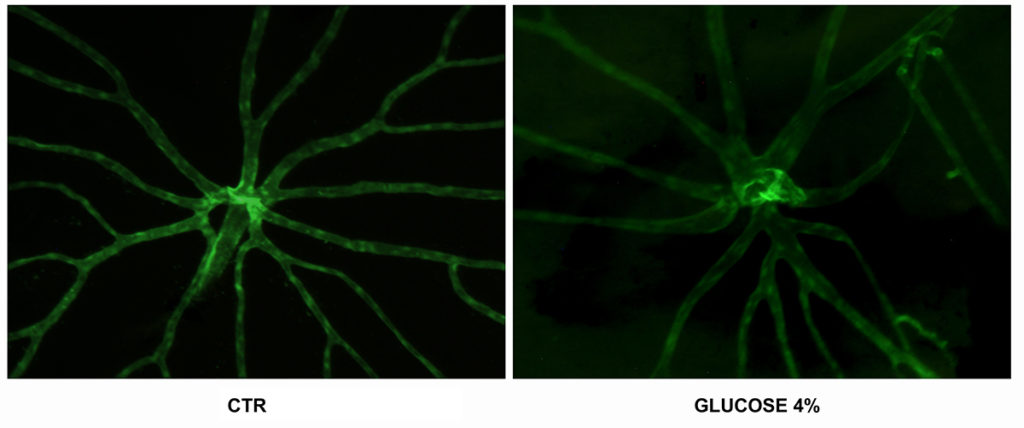ZEBRAFISH LAB
Director: Dr. Massimo Mariotti
Research Topics
TOPIC 4: Creation of pathological models of metabolic human diseases associated with bone complications in adult zebrafish (diabetes, obesity)

Diabetes and obesity can affect human bone through multiple pathways including changes in insulin levels, concentrations of advanced glycation end products in collagen, absorption of calcium, parathyroid hormone secretion and inflammation. Despite several experimental data, the clinical situation is still unclear. Simplified in vivo models can contribute to clarify the pathogenic mechanisms. The aim of our study is to evaluate bone effects of chronic hyperglycemia in a new type II diabetes mellitus zebrafish model created by glucose administration in the water. Basal glycaemia was found increased and the retinal blood vessels showed abnormalities resembling to the human diabetic retinopathy (topic4_image1). The scales of glucose-treated fish shown an osteoporosis-like phenotype, in association with alterations of bone-specific markers. These data indicates an glucose-dependent imbalance of bone metabolism which leads to the bone-loss.
An increase of visceral fat affects human bone health causing fragility, mechanical strength reduction and increased propensity to fractures because of impaired bone matrix microstructure and aberrant bone cell function. Adult Danio rerio (zebrafish) represents a powerful model to study both metabolic diseases and bone metabolism. The aim of this study was to generate an obese adult zebrafish by high-fat diet (topic4_image2) and evaluate metabolic and bone tissue effects. Blood analysis revealed significant alterations in glycaemia, adiponectin and leptin levels that are common in human and other obesity animal models. Advanced glycation end products (AGEs), derived from hyperglycemia condition, were found to be altered too. All these alterations were associated with an impaired bone metabolism measured as an osteoporotic-like phenotype in scales from obese fish. The zebrafish obesity model, as well as the diabetic one, can contribute to elucidate in vivo the molecular mechanisms of metabolic changes in human patients and introduce a model useful for pharmacological screening.
